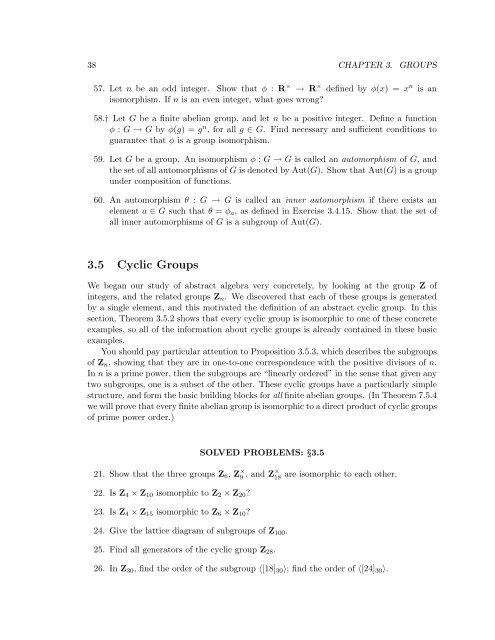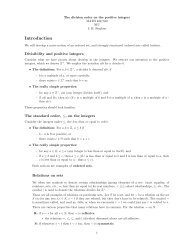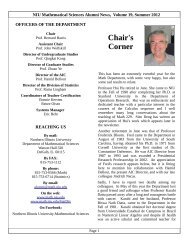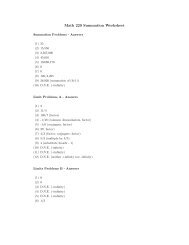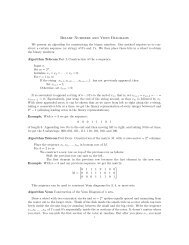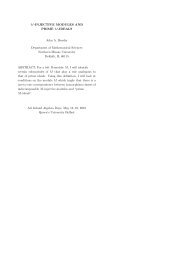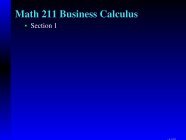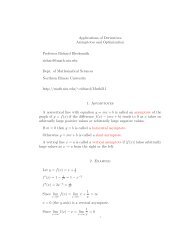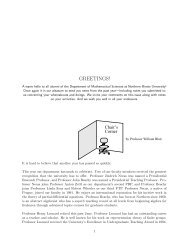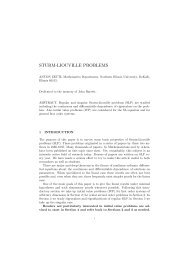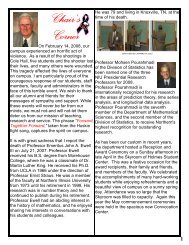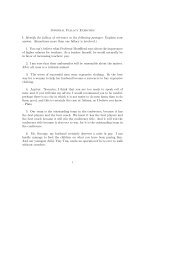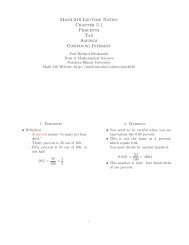abstract algebra: a study guide for beginners - Northern Illinois ...
abstract algebra: a study guide for beginners - Northern Illinois ...
abstract algebra: a study guide for beginners - Northern Illinois ...
You also want an ePaper? Increase the reach of your titles
YUMPU automatically turns print PDFs into web optimized ePapers that Google loves.
38 CHAPTER 3. GROUPS<br />
57. Let n be an odd integer. Show that φ : R × → R × defined by φ(x) = x n is an<br />
isomorphism. If n is an even integer, what goes wrong?<br />
58.† Let G be a finite abelian group, and let n be a positive integer. Define a function<br />
φ : G → G by φ(g) = g n , <strong>for</strong> all g ∈ G. Find necessary and sufficient conditions to<br />
guarantee that φ is a group isomorphism.<br />
59. Let G be a group. An isomorphism φ : G → G is called an automorphism of G, and<br />
the set of all automorphisms of G is denoted by Aut(G). Show that Aut(G) is a group<br />
under composition of functions.<br />
60. An automorphism θ : G → G is called an inner automorphism if there exists an<br />
element a ∈ G such that θ = φa, as defined in Exercise 3.4.15. Show that the set of<br />
all inner automorphisms of G is a subgroup of Aut(G).<br />
3.5 Cyclic Groups<br />
We began our <strong>study</strong> of <strong>abstract</strong> <strong>algebra</strong> very concretely, by looking at the group Z of<br />
integers, and the related groups Zn. We discovered that each of these groups is generated<br />
by a single element, and this motivated the definition of an <strong>abstract</strong> cyclic group. In this<br />
section, Theorem 3.5.2 shows that every cyclic group is isomorphic to one of these concrete<br />
examples, so all of the in<strong>for</strong>mation about cyclic groups is already contained in these basic<br />
examples.<br />
You should pay particular attention to Proposition 3.5.3, which describes the subgroups<br />
of Zn, showing that they are in one-to-one correspondence with the positive divisors of n.<br />
In n is a prime power, then the subgroups are “linearly ordered” in the sense that given any<br />
two subgroups, one is a subset of the other. These cyclic groups have a particularly simple<br />
structure, and <strong>for</strong>m the basic building blocks <strong>for</strong> all finite abelian groups. (In Theorem 7.5.4<br />
we will prove that every finite abelian group is isomorphic to a direct product of cyclic groups<br />
of prime power order.)<br />
SOLVED PROBLEMS: §3.5<br />
21. Show that the three groups Z6, Z × 9 , and Z× 18<br />
22. Is Z4 × Z10 isomorphic to Z2 × Z20?<br />
23. Is Z4 × Z15 isomorphic to Z6 × Z10?<br />
24. Give the lattice diagram of subgroups of Z100.<br />
25. Find all generators of the cyclic group Z28.<br />
are isomorphic to each other.<br />
26. In Z30, find the order of the subgroup 〈[18]30〉; find the order of 〈[24]30〉.


